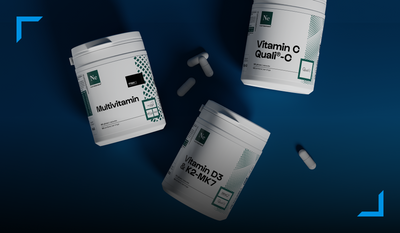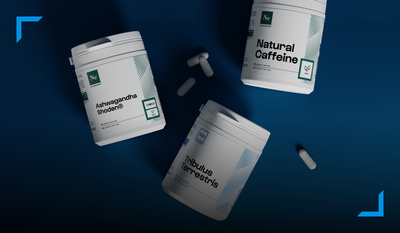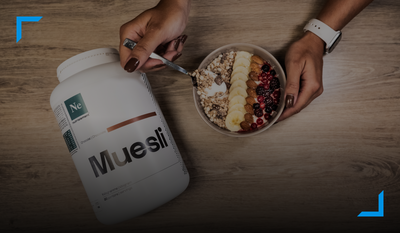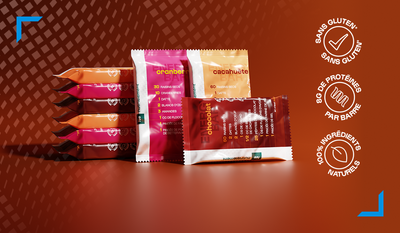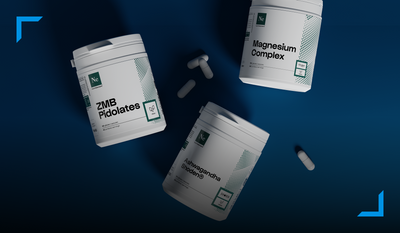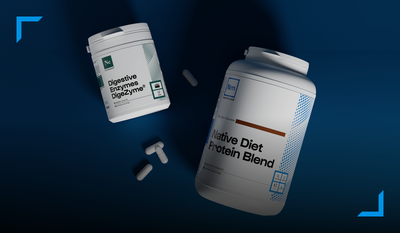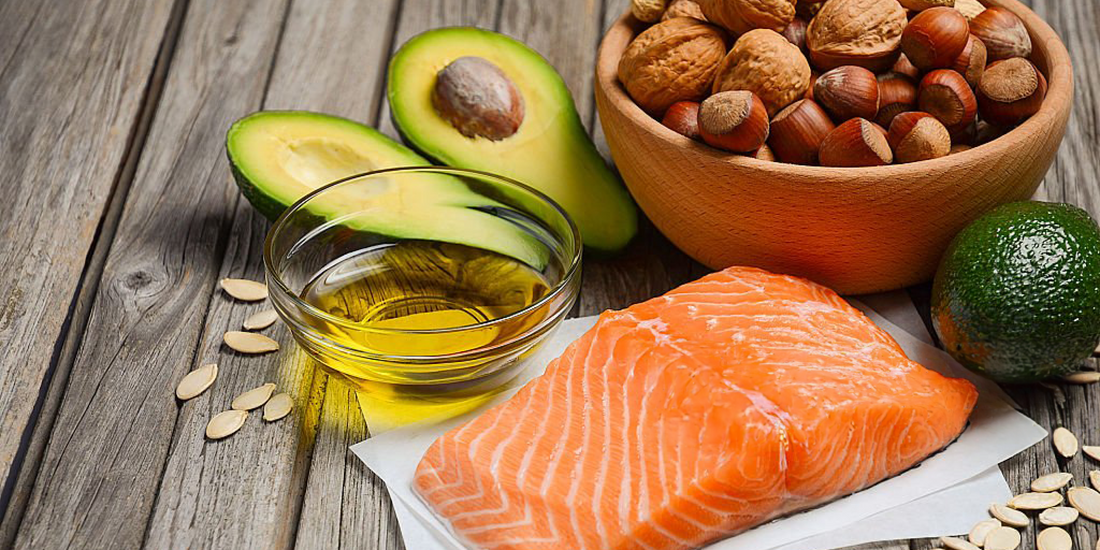0 commentaires
You often hear about lipids, these famous "fats" that raise a lot of questions. Between LDL and HDL cholesterol, omega-3, triglycerides... it's not always easy to find your way around! However, understanding lipids is essential to take care of your health, especially cardiovascular health. Don't panic, we'll explain everything in this article, based on current scientific data. You'll know which lipids to favor, which ones to limit and how to balance all that on your plate. Ready to become an expert on lipids? Let's go!
What exactly are lipids?
Lipids are hydrophobic molecules , meaning they avoid water. These molecules include fats, oils, cholesterol, and other similar substances (1). They play essential roles in our body: in terms of energy, lipids stored in adipose tissues are our main energy reserve . Structurally, cholesterol and phospholipids are key components of cell membranes (1). Hormonally, cholesterol serves as a precursor for the synthesis of various steroid hormones such as testosterone. They are also essential for the absorption of fat-soluble vitamins A, D, E, and K and help protect our vital organs.
In short, lipids are essential for our survival and health. However, an excess or imbalance of certain lipids can have harmful effects, particularly on cardiovascular health.
The major families of lipids
There are several types of lipids, each with their own specificities (1):
- Triglycerides : These are reserve fats, stored in our adipocytes. They are also found in foods of animal and plant origin.
- Cholesterol : present in cell membranes, it is the precursor of vitamin D , sex hormones and bile acids that help digest fats. But its accumulation in the blood (hypercholesterolemia) is a cardiovascular risk factor.
- Phospholipids : They form the basic structure of cell membranes.
- Fatty acids : these are the building blocks that make up most lipids. We distinguish between saturated fatty acids (SFA), monounsaturated fatty acids (MUFA) and polyunsaturated fatty acids (PUFA) such as the famous omega-3 and omega-6.
Each lipid has its role to play, the important thing is to have the right ones in the right proportions. Let's take a closer look.
Focus on omega 3
Omega 3s deserve our attention because they are often deficient in our modern diet. However, these polyunsaturated fatty acids are valuable health allies! Many studies have shown their benefits (6): They have anti-inflammatory properties and can help reduce the risk of cardiovascular disease, particularly by acting on triglycerides , blood pressure , inflammation They are important for the development and functioning of the brain , vision. They could also play a protective role against diabetes, certain cancers and autoimmune diseases
The problem is that we often consume too much pro-inflammatory omega-6 (refined oils, fried foods, etc.) compared to anti-inflammatory omega-3. The ideal would be to have an omega-6/omega-3 ratio of less than 4, whereas it often exceeds 15 in our plates! (6)
To rebalance the scales, focus on wild oily fish (salmon, sardines, mackerel, etc.), nuts, flax and chia seeds, and rapeseed oil. You can also opt for supplementation. But be careful with plant-based omega-3s such as ALA, which are poorly converted into EPA/DHA .
The keys to optimizing your lipid profile
An unbalanced lipid profile, including high LDL cholesterol and triglycerides, is associated with an increased risk of cardiovascular disease (2)(3). So how can we tip the scales in the right direction? Scientific data suggests several approaches: limit saturated fats of animal origin, such as fatty meats, processed meats, butter and cream, as well as palm oil, and prefer poultry and low-fat dairy products. Favor unsaturated fatty acids found in oily fish, olive oil, canola oil and nuts, but consume them in moderation because they are still caloric (4). Eat fiber , which helps regulate cholesterol, by consuming vegetables, fruits, whole grains and legumes (5). Regular physical activity also helps improve the lipid profile, in particular by increasing the "good" cholesterol-HDL (6). It is also recommended to stop smoking and limit alcohol consumption , which have deleterious effects on blood lipids. Finally, monitor your weight and waist size, because abdominal obesity promotes lipid disturbances.
By adopting these healthy habits, you will put all the chances on your side to have an optimal lipid profile. Your heart will thank you! So, what do we do with these lipids now? The idea is not to demonize them but to learn to tame them. Because when well dosed and well chosen, they are valuable allies for our overall health.
Lipids are hydrophobic molecules that are essential to the functioning of our body. There are several families of lipids: triglycerides, cholesterol, phospholipids, fatty acids. Lipids play an energetic, structural, hormonal role and in the absorption of vitamins. Omega-3s are fatty acids that are beneficial for the heart and brain, and must be rebalanced with respect to omega-6s. An optimal lipid profile requires a varied diet, physical activity and the adoption of good lifestyle habits. Choosing and dosing your lipids correctly is the key to maintaining your health in the long term.
Scientific references
- Gao, F., Tom, E., & Skowronska-Krawczyk, D. (2024). Dynamic Progress in Technological Advances to Study Lipids in Aging: Challenges and Future Directions. Frontiers in Physiology, 13, 847310. https://doi.org/10.3389/fphys.2022.847310
- Turner, B.J., Hollenbeak, C.S., Weiner, M., & Tang, S.S. (2011). A Retrospective Cohort Study of the Potency of lipid-lowering therapy and Race-gender Differences in LDL cholesterol control. BMC Cardiovascular Disorders, 11, 58. https://doi.org/10.1186/1471-2261-11-58
- Kou, H., Deng, J., Gao, D., Song, A., Han, Z., Wei, J., Jin, X., Ma, R., & Zheng, Q. (2021). Relationship among adiponectin, insulin resistance and atherosclerosis in non-diabetic hypertensive patients and healthy adults. Clinical and Experimental Hypertension, 40(7), 656-663. https://doi.org/10.1080/10641963.2018.1425414
- Schwingshackl, L., Bogensberger, B., Benčič, A., Knüppel, S., Boeing, H., & Hoffmann, G. (2020). Effects of oils and solid fats on blood lipids: a systematic review and network meta-analysis. Journal of Lipid Research, 59(9), 1771-1782. https://doi.org/10.1194/jlr.P085522
- National Research Council (US) Committee on Diet and Health. (1989). Diet and Health: Implications for Reducing Chronic Disease Risk. National Academies Press (US). https://www.ncbi.nlm.nih.gov/books/NBK218759/
- Varady, K.A., & Jones, P.J. (2005). Combination diet and exercise interventions for the treatment of dyslipidemia: an effective preliminary strategy to lower cholesterol levels?. The Journal of nutrition, 135(8), 1829–1835. https://doi.org/10.1093/jn/135.8.1829




